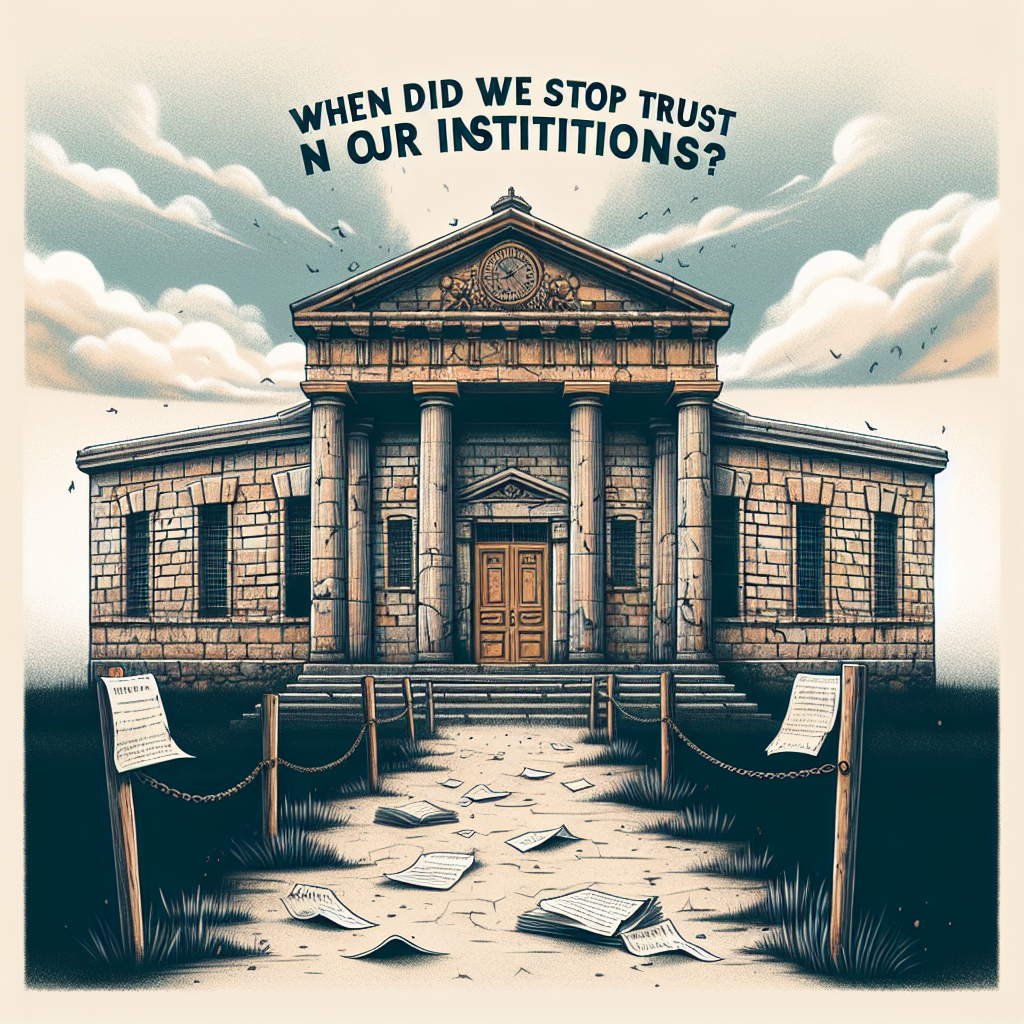The increasing extraction of trust by corporations and institutions for profit has raised significant concerns about social cohesion and stability. Trust, while an intricate and often intangible concept, is vital to the functioning of societies and their institutions. The erosion of this trust occurs gradually, often perceived rather than quantitatively measured, reflecting broader issues in societal connections and interactions. Social trust serves as a critical pillar of social cohesion; when it declines, it can lead to fractures in the societal fabric. Understanding this decay is essential for addressing the underlying issues contributing to the disintegration of trust in institutional mechanisms.
The unraveling of trust in core institutions is a historical phenomenon with roots in significant events of the 20th century. The question of when institutions began to lose public confidence opens a complex dialogue about the actions, transparency, and accountability of these entities. Institutions such as governments, healthcare systems, educational bodies, and media outlets hold a foundational role in public trust dynamics. They can either cultivate or erode that trust through their actions, often creating a disconnection between proclaimed values and lived realities. Indeed, trust is not simply an inherent quality; rather, it is a relationship forged through consistent and honest engagement.
In reflecting on the critical events that inspired skepticism towards institutions, the 1960s emerge as a pivotal era. Trust nurtured during the post-World War II years began to deteriorate as the public grappled with inconsistencies and troubling narratives surrounding high-profile events, such as the assassination of President John F. Kennedy and the subsequent murders of Martin Luther King Jr. and Robert Kennedy. These assassination narratives incited public curiosity and doubt, leading many to question the motives behind the stories propagated by authorities. Ultimately, the underlying concern centered on whether issues concealed by claims of national security were indicative of deeper institutional failures.
The Vietnam War acted as a catalyst for further disillusionment, as the government’s messaging around military success contrasted starkly with the unfolding chaos and loss of life. Initial perceptions of a manageable conflict devolved into a grim reality that challenged the confidence instilled by earlier wartime sentiments. The extensive use of misleading information and propaganda during the war fueled skepticism among the populace, leaving many unwilling to accept the government’s framing of the situation. While a segment of society continued to support its government’s actions, a growing number found themselves disillusioned by the discrepancies between official narratives and the harsh realities of the war.
Watergate marked another watershed moment in the historical decline of trust in institutions. The scandal exposed a pattern of cover-ups and dishonesty that further eroded public faith in governmental effectiveness. As revelations emerged about the bureaucratic machinations within the FBI and CIA, disillusionment deepened. These organizations were supposed to act as protectors against external threats and internal dissent, yet they appeared to be encroaching on democratic tenets through illegal means aimed at stifling opposition. These betrayals solidified a pervasive atmosphere of doubt and resentment towards institutions meant to serve the public.
The narrative around government competence shifted significantly during the 1980s, with conservative movements suggesting that government institutions were inherently flawed. However, irrespective of the political party in power, the structure of government continued to expand, resulting in an ever-growing institutional and corporate footprint. Efforts to “reinvent government” in the 1990s under President Clinton momentarily suggested a shift towards reduced governmental size and increased efficiency, yet the trend toward expanding power persisted. The ongoing complexities and contradictions within institutional governance compounded the public’s declining trust, leading to an environment steeped in skepticism as institutions struggled to align their actions with public expectations and aspirations.

